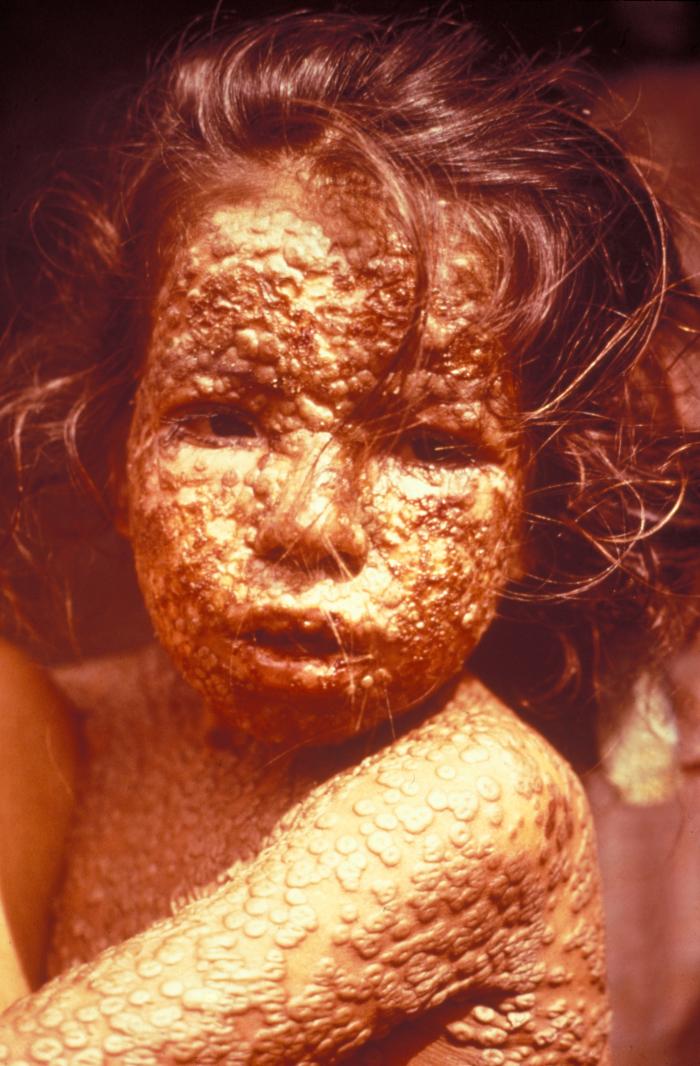Infectious disease historical perspective
|
Infectious disease Microchapters |
|
Diagnosis |
|---|
|
Treatment |
|
Case Studies |
|
Infectious disease historical perspective On the Web |
|
American Roentgen Ray Society Images of Infectious disease historical perspective |
|
Risk calculators and risk factors for Infectious disease historical perspective |
Editor-In-Chief: C. Michael Gibson, M.S., M.D. [2]; Associate Editor-In-Chief: Cafer Zorkun, M.D., Ph.D. [3]
Historical Perspective
History

- Abū Alī ibn Sīnā (Avicenna) discovered the contagious nature of infectious diseases in the early 11th century, for which he is considered the father of modern medicine. He introduced quarantine as a means of limiting the spread of contagious and infectious diseases in The Canon of Medicine, circa 1020. He also stated that bodily secretion is contaminated by foul foreign earthly bodies before being infected, but he did not view them as primary causes of disease.
- When the Black Death bubonic plague reached al-Andalus in the 14th century, Ibn Khatima and Ibn al-Khatib hypothesized that infectious diseases are caused by microorganisms which enter the human body. Such ideas became more popular in Europe during the renaissance, particularly through the writing of the Italian monk Girolamo Fracastoro.[1]
- Anton van Leeuwenhoek (1632-1723) advanced the science of microscopy, allowing for easy visualization of bacteria.
- Louis Pasteur proved beyond doubt that certain diseases are caused by infectious agents, and developed a vaccine for rabies.
- Robert Koch, provided the study of infectious diseases with a scientific basis known as Koch's postulates.
- Edward Jenner, Jonas Salk and Albert Sabin developed effective vaccines for smallpox and polio, which would later result in the eradication and near-eradication of these diseases, respectively.
- Alexander Fleming discovered the world's first antibiotic Penicillin.
- Gerhard Domagk develops Sulphonamides, the first broad spectrum synthetic antibacterial drugs.
Historic Pandemics

A pandemic (or global epidemic) is a disease that affects people over an extensive geographical area.
- Plague of Justinian, from 541 to 750, killed between 50 and 60 percent of Europe's population.[2]
- The Black Death of 1347 to 1352 killed 25 million in Europe over 5 years (estimated to be between 25 and 50% of the populations of Europe, Asia, and Africa - the world population at the time was 500 million).
- The introduction of smallpox, measles and typhus to the areas of Central and South America by European explorers during the 15th and 16th centuries caused pandemics among the native inhabitants. Between 1518 and 1568 disease pandemics are said to have caused the population of Mexico to fall from 20 million to 3 million.[3]
- The first European influenza epidemic occurred between 1556 and 1560, with an estimated mortality rate of 20%.[3]
- Smallpox killed an estimated 60 million Europeans in the 18th century alone. Up to 30% percent of those infected, including 80% of the children under 5 years of age, died from the disease, and one third of the survivors went blind. [4]
- The Influenza Pandemic of 1918 (or the Spanish Flu) killed 25-50 million people (about 2% of world population of 1.7 billion).[5] Today Influenza kills about 250,000 to 500,000 worldwide each year.
Emerging Diseases and Pandemics
In most cases, microorganisms live in harmony with their hosts. Such is the case for many tropical viruses and the insects, monkeys, or other animals in which they have lived and reproduced. Because the microbes and their hosts have co-evolved, the hosts gradually become resistant to the microorganisms. When a microbe jumps from a long-time animal host to a human being, it may cease to be a harmless parasite and become pathogenic.
With most new infectious diseases, some human action is involved, changing the environment so that an existing microbe can take up residence in a new niche. When that happens, a pathogen that had been confined to a remote habitat appears in a new or wider region, or a microbe that had infected only animals suddenly begins to cause human disease.
Several human activities have led to the emergence and spread of new diseases, see also Globalization and Disease:
- Encroachment on wildlife habitats. The construction of new villages and housing developments in rural areas brings people into contact with animals--and the microbes they harbor.
- Changes in agriculture. The introduction of new crops attracts new crop pests and the microbes they carry to farming communities, exposing people to unfamiliar diseases.
- The destruction of rain forests. As countries make use of their rain forests, by building roads through forests and clearing areas for settlement or commercial ventures, people encounter insects and other animals harboring previously unknown microorganisms.
- Uncontrolled urbanization. The rapid growth of cities in many developing countries tends to concentrate large numbers of people into crowded areas with poor sanitation. These conditions foster transmission of contagious diseases.
- Modern transport. Ships and other cargo carriers often harbor unintended "passengers", that can spread diseases to faraway destinations. While with international jet-airplane travel, people infected with a disease can carry it to distant lands, or home to their families, before their first symptoms appear.
Medical Specialists
The medical treatment of infectious diseases falls into the medical field of Infectiology and in some cases the study of propagation pertains to the field of Epidemiology. Generally, infections are initially diagnosed by primary care physicians or internal medicine specialists. For example, an "uncomplicated"pneumonia will generally be treated by the internist or the pulmonologist (lung physician).The work of the infectiologist therefore entails working with both patients and general practitioners, as well as laboratory scientists, immunologists, bacteriologists and other specialists..
An infectious disease team may be alerted when:
- The disease has not been definitively diagnosed after an initial workup
- The patient is immunocompromised (for example, in AIDS or after chemotherapy);
- The infectious agent is of an uncommon nature (e.g. tropical diseases);
- The disease has not responded to first line antibiotics;
- The disease might be dangerous to other patients, and the patient might have to be isolated.
References
- ↑ Beretta M (2003). "The revival of Lucretian atomism and contagious diseases during the renaissance". Medicina nei secoli. 15 (2): 129–54. PMID 15309812.
- ↑ and Epidemic Disease in History
- ↑ 3.0 3.1 Dobson, Andrew P. and E. Robin Carter (1996) Infectious Diseases and Human Population History (full-text pdf) Bioscience;46 2.
- ↑ Smallpox: The Triumph over the Most Terrible of the Ministers of Death
- ↑ Influenza of 1918 (Spanish Flu) and the US Navy